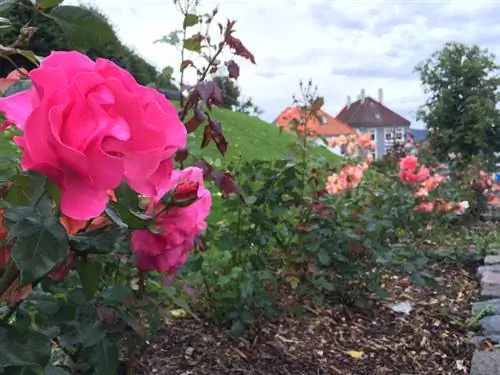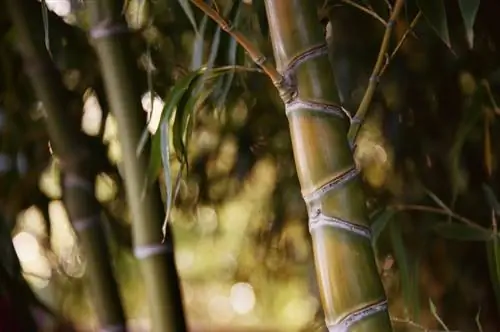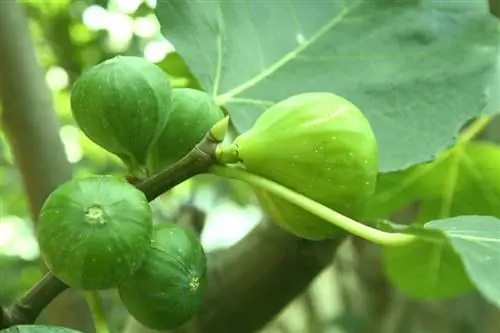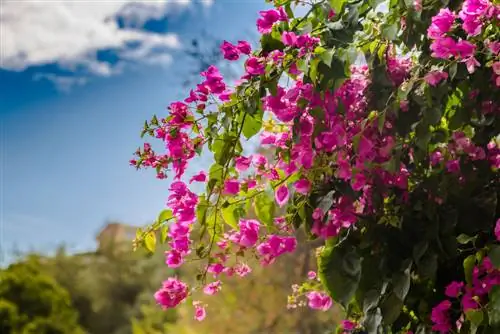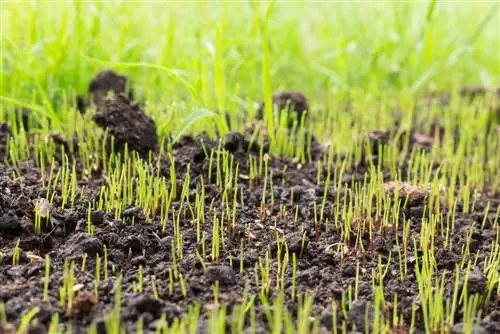- Author admin [email protected].
- Public 2023-12-16 16:46.
- Last modified 2025-01-23 11:20.
So that your roses grow well, have he althy leaf color and bloom profusely, you need to fertilize them regularly. The popular garden plants are not only heavy feeders that require a lot of nutrients - they also need them in the right composition. Roses are not necessarily helped by nitrogen-based fertilization, as this only stimulates growth and not the formation of flowers. You can find out what else you should pay attention to when fertilizing your roses correctly in the following article.

When and how should you fertilize roses?
Roses should be provided with organic or organo-mineral fertilizer in spring and after flowering. Liquid fertilizer can also be used during the growing season. A final fertilization with Patentpotash in August strengthens the shoots before winter.
Do not fertilize roses until spring
Roses are usually planted in late autumn between October and early December. At this point they are dormant, which is why fertilizing (for example with compost) is basically pointless - the roots wouldn't absorb the nutrients anyway. Fertilization is carried out for the first time in the spring after planting, ideally between the end of March and the beginning of April. Now the roots absorb the nutrients and pass them on as desired.
Basic fertilization with organic or mineral fertilizer
Roses receive basic fertilization with organic or organo-mineral fertilizers twice a year, once at the beginning of the growing season around the beginning of April and a second time immediately after flowering, but not later than the beginning of July. After July fertilization, roses should no longer be fed, otherwise the shoots will not be able to mature in time for winter and risk freezing in low temperatures. If possible, only use organic fertilizers or mixtures of organic and mineral fertilizers. Purely mineral fertilizers (such as blue grain) contain too much nitrogen and are therefore unsuitable for roses. Special rose fertilizers, on the other hand, contain exactly the right composition of nutrients.
Organic fertilizer releases nutrients slowly
While mineral fertilizers release their nutrients to the plant immediately (and therefore risk over-fertilization more quickly), organic fertilizers such as compost or cattle manure only release their nutrients to the plant gradually during the rotting process. Therefore, the risk of over-fertilization is significantly lower, but the nutrients are not immediately available to the rose.
Improving nutrient-poor soil
Some nutrient-poor soil is not inherently low in nutrients, but simply depleted. You can determine whether this is also the case with your garden soil by conducting a soil analysis. In most cases, however, gardeners in Germany have the opposite problem, as many soils are simply too “fat” because they have been fed too much and uncontrolled nutrients over the years. However, you can improve soil that is actually poor in nutrients according to the instructions provided in the soil sample.
Supplement basic fertilization with liquid fertilizer
In addition to basic fertilization, you can provide your roses with liquid fertilizer throughout the entire growing season, but in a low concentration - this is to prevent over-fertilization. This type of supply is particularly relevant for roses grown in containers and when the basic fertilization is running out too quickly. For example, it can be quickly washed out by frequent watering (in strong heat) or frequent rain. When supplying liquid fertilizers, you should also rely primarily on organic products (€13.00 on Amazon).
Final fertilization in August
In addition to the supply of nutrients, we also recommend final fertilization with patent potash, which should be carried out in August. This supports the new shoots as they mature and ensures that the rose is hardened and made winter-proof. Apply this fertilization at the end of August at the latest, because applying it later no longer has any positive effects on the shoot maturity.
Treating chlorosis in roses
If the leaves of the roses turn yellowish, chlorosis, i.e. an iron deficiency, may be behind it. You can recognize this deficiency disease by the pale leaves, on which the leaf veins are prominent. Iron deficiency occurs primarily when the soil pH is above 7.5 and is primarily treated by moving the soil more towards the acidic direction. This is done, for example, by adding peat or adding an acidic fertilizer. You can restore the fresh green foliage color in the short term with the help of a special iron fertilizer.
Fertilize container roses properly
Regular fertilization is particularly important for container roses, as the plant cannot supply itself with nutrients from the soil. In addition, the nutrient supply in a spatially limited planter is usually exhausted very quickly. Roses in pots receive a slow-release fertilizer at the beginning of the growing season, which continuously supplies the plant with nutrients for several months. In addition, supplementary fertilization is carried out with a low-dose liquid fertilizer. In contrast to planted specimens, container roses should be fertilized until September, otherwise they may suffer from a nutrient deficiency.
Tip
Make sure to water your rose bush thoroughly after each fertilization. In this way, the nutrients go straight to where they belong: namely to the roots.

